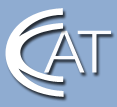Explore high-paying careers in clean, high-tech Connecticut manufacturing.

Educators: Externships
Work-based Learning Projects for the Classroom
Project: Parametric Modeling of a Turbine Rotor Disk and Blade
Name of NGM Educator: Dave Salonia, Technology Education, Berlin High School |
Name of Host Company: Pratt & Whitney Aircraft, United Technologies Corp. |
Grade Level: Grades 9 - 12, high school |
Student Work Types:
|
Task Abstract: Develop and analyze a jet engine turbine blade. Analyze the turbine blade for potential destructive resonances using the Campbell and Goodman Diagrams. Analyze the heat transfer characteristics of the blade using standard heat transfer equations. |
Task Objectives: The student will learn how to model a turbine rotor and blade using 3D modeling software. The student will learn about vibration design and then apply vibration principles to analyze his/her turbine blade model that was created in the previous exercise. 3. The student will learn about heat transfer and apply standard heat transfer equations to further analyze his/her turbine blade model. |
Esssential Understandings/Questions: 1. What is parametric modeling? |
Task Description: Students will develop a turbine blade using the CAD system given some overall dimensions and specifications. Using these specifications and their knowledge of the CAD system, they will develop a very simple turbine blade that will be used for later analysis. The blade will be developed using some of the parametric modeling concepts discussed in class. Using the turbine blade previously developed, the students will now analyze the blade for potentially destructive resonances that can occur during operation. Students will use various engineering analysis tools and perform mathematical calculations to see if their turbine blade will fail during actual operation. If the design is flawed, the students must redesign their CAD model to correct the resonance problem. Next, the students will analyze their turbine blade for proper cooling capability. Turbine blades operate under tremendous heat conditions (over 1800 deg F) and need to be designed so they don't melt under the extreme heat conditions. Students will use a series of heat transfer equations to solve for the proper cooling temperature of the turbine blade. If the blade fails the heat transfer analysis, they will redesign until acceptable ranges are obtained. Finally, the student will keep an engineering notebook that traces all design work, sketches, observations, calculations and conclusions. |
Resources Required: Power Point slides, CAD system, calculator, pencil and engineering notebook. |
Prior Learning Required: An understanding of CAD is required for the Parametric Modeling lesson. An understanding of vibration, resonance, moment of inertia, ultimate tensile strength, vibratory stress and steady stress is required. Other topics include stiffness, volume, and mass calculations. |
Educator Comments: This was a very successful externship for many reasons. First, several engineering managers and personnel were actively engaged in helping to develop the lessons. This gave them an opportunity to learn about our pre-engineering curriculum and become part of the learning process for high school students, thus establishing a future networking relationship. All of the managers involved were most cooperative and donated a significant amount of time to the externship despite their busy schedules. They were very impressed that students were being prepared for engineering careers in high school. Secondly, the students got an opportunity to interact with members of the company to more fully understand its needs. Prior to the externship, the students were invited by Pratt & Whitney to tour their engineering and production facilities. The students were given a special presentation that highlighted what the company does and how jet engines operate. We are looking forward to future field trips at Pratt & Whitney, including a follow-up to the lesson and a separate shadowing event in the future. Thirdly, as a teacher of engineering and technology education, I had an opportunity to work in a very large company and learned many aspects of how it operates so I can transfer this knowledge to the students. So in this type of experience, the manufacturer, the student, and the teacher all gain knowledge; it's a win-win-win situation! We agreed that this externship would begin an ongoing partnership whereby the company, the teacher and the students continue to network in the future. For example, we have established a PLTW partnership team at Berlin High School . This team reviews our program at regular intervals and looks at ways that the program can be improved. As a result of this externship, my sponsor has volunteered to become a member of the partnership team, thus helping us keep the program rigorous and relevant in years to come. |





